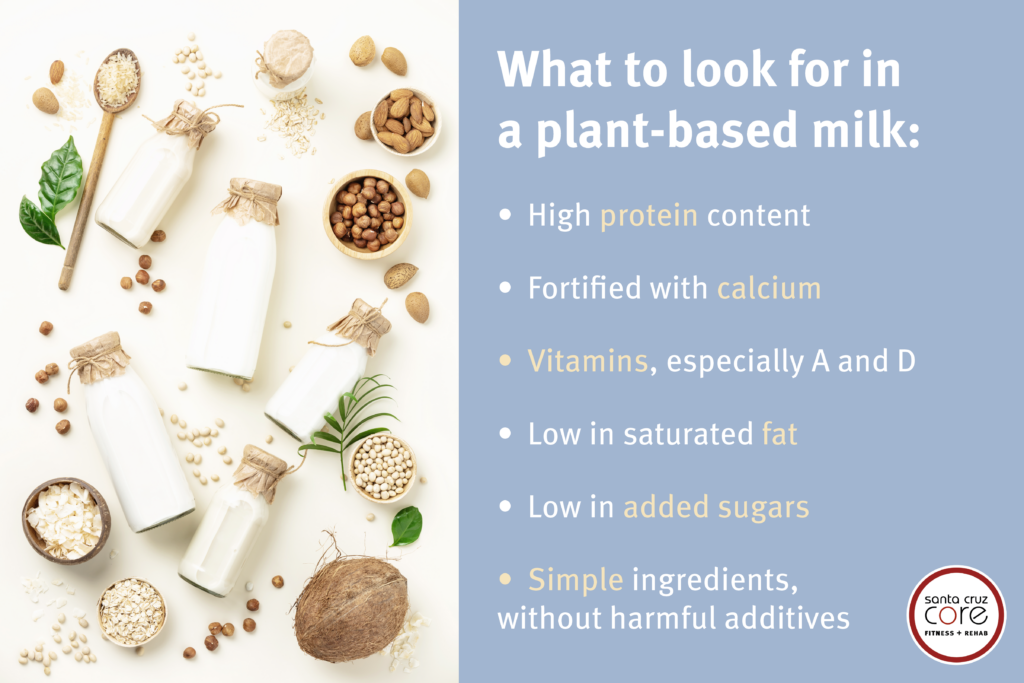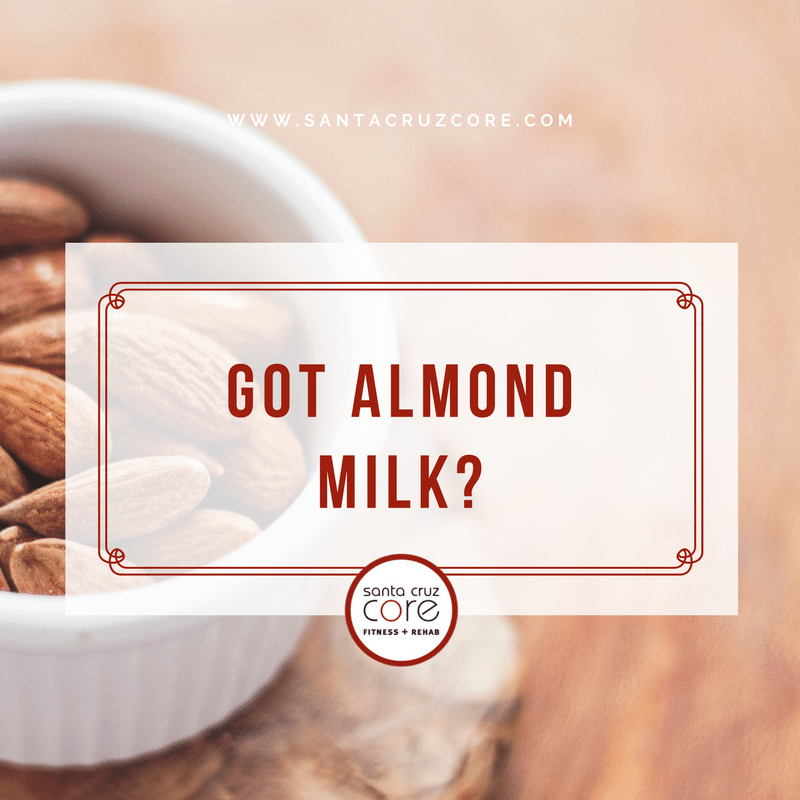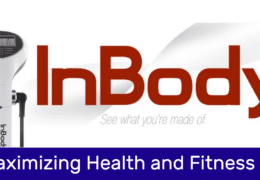Choosing the Best Milk Alternatives For Your Health: 5 to Embrace and 4 to Avoid
In recent years, grocery stores, coffee shops, and even one’s fridge have become filled with an array of milk alternatives, for those of us individuals who are unable to drink traditional cow, goat, or even camel milk. Then, there are people who prefer the taste of plant-based milk instead. Either way, many individuals aren’t sure what milk alternative is the best for consumption.
Some benefits of consuming milk alternatives are: that they do not contain cholesterol or lactose, some are lower in fat and calories, and fewer people are allergic to them. These factors make them ideal for everyone, especially those with heart disease, allergies, and more(1). These milk alternatives, while varying in taste and texture, also vary widely in their nutritional value and ingredients. Here is a brief synopsis of some of the milk alternatives so that you, the consumer can feel empowered and educated when going to add a beverage to your morning brew or daily cereal.

Milk Alternatives
- Soy Milk – The “OG”: Soy milk is the original milk alternative, and is a very popular option due to its creamy texture and full-bodied flavor. It’s an excellent source of protein, averaging about 9 grams per serving(2). It also contains essential amino acids, which may be valuable for vegans and vegetarians. Furthermore, soy milk is typically fortified with calcium and vitamin D.
- Almond Milk – The Lighter One: Almond milk stands out as one of the most common milk alternatives. It’s naturally low in calories compared to dairy and other non-dairy milks, and evidently, it has a very light flavor. Also, almond milk is rich in vitamin E, an antioxidant that supports skin health(2).
- Oat Milk – The Creamy One: Oat milk has gained popularity due to its creamy texture and naturally sweet flavor, making it a go-to for coffee and tea beverages. It is fortified with essential nutrients such as calcium, vitamin A, vitamin D, and riboflavin, and tends to have more fiber than other non-dairy options(2). Lastly, oat milk is a great option for people who experience soy, dairy, lactose, or nut sensitivities. Pay attention to the ingredient list as many oat milk alternatives have canola, safflower, or some other type of oil to enhance the creaminess.
- Pea Milk – The Rising Star: Pea milk is fairly uncommon in grocery stores, but is quickly gaining popularity. It contains 150% more calcium than cow’s milk, and is packed with about 7 grams of pea protein per serving(3). Also, it is rich in vitamins A and D. Many people enjoy pea milk because its taste and consistency are very similar to cow’s milk.
- Tiger Nut Milk – The Hidden Gem: Tiger nut milk is another less common milk alternative that is quite nutrient-dense. Tiger nuts aren’t even nuts at all, they are part of a weed known as yellow nutsedge. It is rich in calcium, healthy fats, magnesium, antioxidants, and phosphorus(4). To boot, it also contains oleic acid, a fatty acid that helps in reducing inflammation and immune health(5).
Milk Alternatives to be Mindful Of
- Rice Milk: Rice milk, though hypoallergenic and suitable for those with nut or soy allergies, tends to be higher in carbohydrates and lower in protein than other milk alternatives. It may not be the best choice for individuals looking to manage blood sugar levels or maintain satiety.
- Cashew Milk: Cashew milk is known for its delicious flavor but relatively low protein content. While it can be part of a balanced diet, it should not be relied upon as the primary source of nutrition for individuals requiring higher protein intake.
- Flax Milk: Flax milk is often praised for its omega-3 fatty acids content. However, it may not provide as much protein as other milk alternatives. If choosing flax milk, it is essential to complement it with protein-rich foods in one’s diet.
- Coconut Milk beverage: Coconut milk beverage (not the ultra-thick, canned coconut milk typically used for soups) offers a rich creamy texture along with a distinct flavor profile. While coconut milk beverage is low in calories and carbs, it is higher in saturated fat; consuming this often could negatively affect heart health(2). Furthermore, it contains no protein and low calcium, making it overall a less nutritious option(2). When consumed in moderation, it can be part of a balanced diet.
Ingredients to Consume with Caution
While the rise of milk alternatives has brought many benefits, it has also led to the inclusion of various additives to enhance texture and flavor.
- Thickeners and Gums: Some milk alternatives incorporate thickeners such as carrageenan and guar gum. While generally considered safe, these additives may cause digestive discomfort in some individuals. Opt for products with minimal or no thickeners if one has a sensitive stomach.
- Seed Oils: Certain milk alternatives may contain oils derived from seeds like sunflower or safflower. While these oils contribute to a creamy texture, they may also introduce unhealthy amounts of omega-6 fatty acids. An imbalanced omega-6 to omega-3 ratio can promote inflammation in the body. Try to choose products made with healthier fat sources, such as coconut or almond oils.
- Added Sugars: Many flavored milk alternatives often contain added sugars, which can increase calorie intake, spike blood sugar, and negatively impact overall health. Try to use unsweetened versions or those sweetened with natural alternatives like stevia or monk fruit.

Another Consideration: Environmental Impact
A major factor that is driving people to switch to non-dairy milk is their effect on the environment. Options like almond, oat, and soy create ⅓ or less greenhouse gas emissions, compared to cow’s milk(6). Producing just one liter of cow’s milk uses an average of 8.95 m2 of land, and a whopping 626L of freshwater. It only takes an average of 0.6m2 of land and 38L of freshwater to produce one liter of a common milk alternative(7) (besides almond milk, which uses about ⅔ the water of cow’s milk). If you are trying to be more sustainable in your food choices, switching to a milk alternative is a great way to start.
Conclusion
Selecting the appropriate milk alternative depends on individual dietary needs and health goals. Almond, oat, soy, pea, and tiger nut milk stand out as the smarter choices for those wanting to consume larger amounts of a dairy alternative, each offering unique nutritional benefits. Rice, cashew, flax, and coconut milk may not provide the same nutritional value and might not be suitable for everyone.
Additionally, scrutinizing ingredient lists to avoid products with excessive thickeners, seed oils, and added sugars is essential when choosing milk alternatives. Opting for simpler, more natural options can facilitate healthier choices within the realm of non-dairy milk substitutes.
It is crucial to remember that individual nutritional requirements vary, so consulting with a healthcare professional or registered dietitian can help determine the most appropriate milk alternative for specific circumstances. By making informed choices, individuals can enjoy the benefits of non-dairy milk while promoting overall health and well-being.
To learn more about nutrition and how to make the best choices for your unique body’s needs, schedule a consultation with one of our nutrition specialists! At CORE, we use Functional Integrative Nutrition to analyze the interrelationships between your diet, biology, environment, and lifestyle to treat the whole person.
Sources:
(1) Sethi, Swati, Tyagi, S.K. & Anurag, Rahul. “Plant-based milk alternatives an emerging segment of functional beverages: a review.” National Library of Medicine, 2016. https://www.ncbi.nlm.nih.gov/pmc/articles/PMC5069255/
(2) Cleveland Clinic. “What You Need to Know When Choosing Milk and Milk Alternatives.” 2021.
https://health.clevelandclinic.org/what-you-need-to-know-when-choosing-milk-and-milk-alternatives/
(3) Parrish, Carol Rees. “Moo-ove Over, Cow’s Milk: The Rise of Plant-Based Dairy Alternatives.” NUTRITION ISSUES IN GASTROENTEROLOGY, SERIES #171. 2018. https://med.virginia.edu/ginutrition/wp-content/uploads/sites/199/2014/06/January-18-Milk-Alternatives.pdf
(4) Katiboina, Dr. Voina, Allarakha, Shaziya. “9 Health Benefits of Tiger Nuts.” MedicineNet, 2022. https://www.medicinenet.com/9_health_benefits_of_tiger_nuts/article.htm
(5) Sales-Campos, H., Reis de Souza, P., and others. “An overview of the modulatory effects of oleic acid in health and disease.” National Library of Medicine, 2013. https://pubmed.ncbi.nlm.nih.gov/23278117/
(6) Oakes, Kelly. “Which milk alternative should we be drinking?” BBC, The Vegan Factor: 2020. https://www.bbc.com/future/article/20200207-which-milk-alternative-should-we-be-drinking
(7) Bogueva, Diana Ph.D., and Morinova, Dora Ph.D. “Examining the Safety of Alternative Milks.” FoodSafety Magazine, 2022. https://www.food-safety.com/articles/8148-examining-the-safety-of-alternative-milks









Leave a Reply